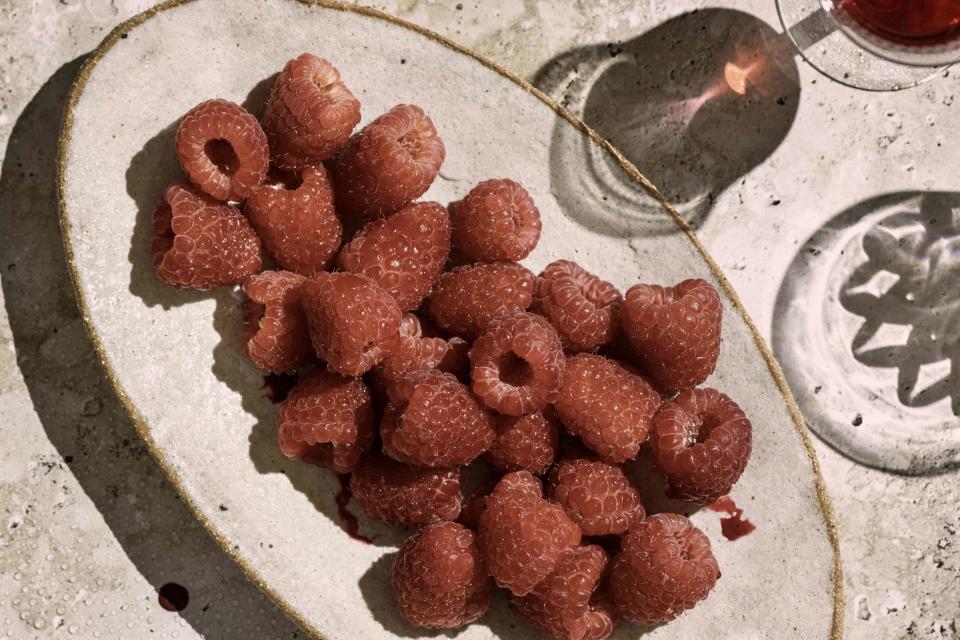How to Store Raspberries So They Don’t Grow Mold
Plus, a trick to extending their shelf life for up to 18 months.

Monica Bertolazzi/Getty Images
Have you ever bought a batch of raspberries, just to see that they’re growing mold the very next day? It’s incredibly frustrating, and can feel like you’re throwing fresh food and money in the trash. Raspberries aren’t only delicious, but they’re an incredible source of antioxidants, vitamins, and minerals, and are even proven to protect against diseases like diabetes, cancer, and more. But, while raspberries are deliciously irresistible, they’re also one of the more delicate berries, and they spoil very quickly.
If stored correctly, fresh raspberries can last for up to two days in the refrigerator. That’s right. If you want to enjoy them at their best, you shouldn’t waste any time. But, freezing fresh raspberries is also a great option because it will minimize waste and allow you to enjoy raspberries even when they’re not in season. Keep reading for tips on how to store raspberries so they stay fresh for as long as possible.
Related: How to Store Lemons So They Stay Juicy and Vibrant
How to Store Raspberries
The real trick to keeping raspberries fresh is to eliminate any additional moisture. Once you get home from the farmer’s market or grocery store, place all your fresh raspberries on a paper towel to allow the extra moisture to be absorbed. You may notice that some of the berries are moldy or super squished; those should be tossed and not thrown back in with the other raspberries.
Once the raspberries are patted dry, add them back to their original clamshell or a ceramic perforated container. The airflow is essential for keeping the berries fresh, so it’s important to never store them in an airtight food storage container. Another thing to keep in mind, according to Driscoll’s, is to only wash the raspberries once you’re ready to eat them. Introducing moisture to the berries will promote mold growth and make them go bad more quickly.
Lastly, you should store your raspberries in the front of your refrigerator. Putting raspberries in the back of the fridge, or even in the crisper drawer, can cause them to spoil sooner. As we mentioned, when stored properly in the fridge, raspberries should stay fresh for about two (maybe three) days.
Related: How to Store Cilantro So It Stays Flavorful
How to Freeze Raspberries
The sad reality is that raspberries spoil pretty quickly, even when stored properly. If you want to preserve fresh raspberries for as long as possible, freezing them is always a great option. Follow these simple steps to preserve your raspberries for up to 18 months:
Inspect your carton of raspberries and toss any that are moldy or discolored.
Gently wash the raspberries in a colander at least twice, making sure not to soak them. Allow them to drain for 10 minutes.
Spread the raspberries on a paper towel and pat dry, leaving no moisture.
Place the raspberries on a wax paper-lined baking sheet, making sure they don’t touch.
Put the baking sheet in the freezer for 2-4 hours, making sure to check on the raspberries every hour or so.
Once the raspberries are frozen solid, place them in an airtight, freezer-safe bag or container. When stored this way, raspberries will last for about 18 months.
How to Thaw Raspberries
Ready to use your frozen raspberries? You can either let them defrost in the refrigerator for about 12 hours, or, if you want to enjoy them sooner, you can place them on your kitchen counter and dig in once they’ve come to room temperature. Just be sure to never microwave your frozen raspberries, because it can ruin the texture and taste.
Related: How to Freeze Tomatoes So You Can Enjoy Them Whenever You Want
No matter what thawing method you choose, you can now use your once-frozen raspberries in a smoothie, to top your morning cereal, or in baked goods such as these Sugar-Crusted Raspberry Muffins.
For more Real Simple news, make sure to sign up for our newsletter!
Read the original article on Real Simple.

